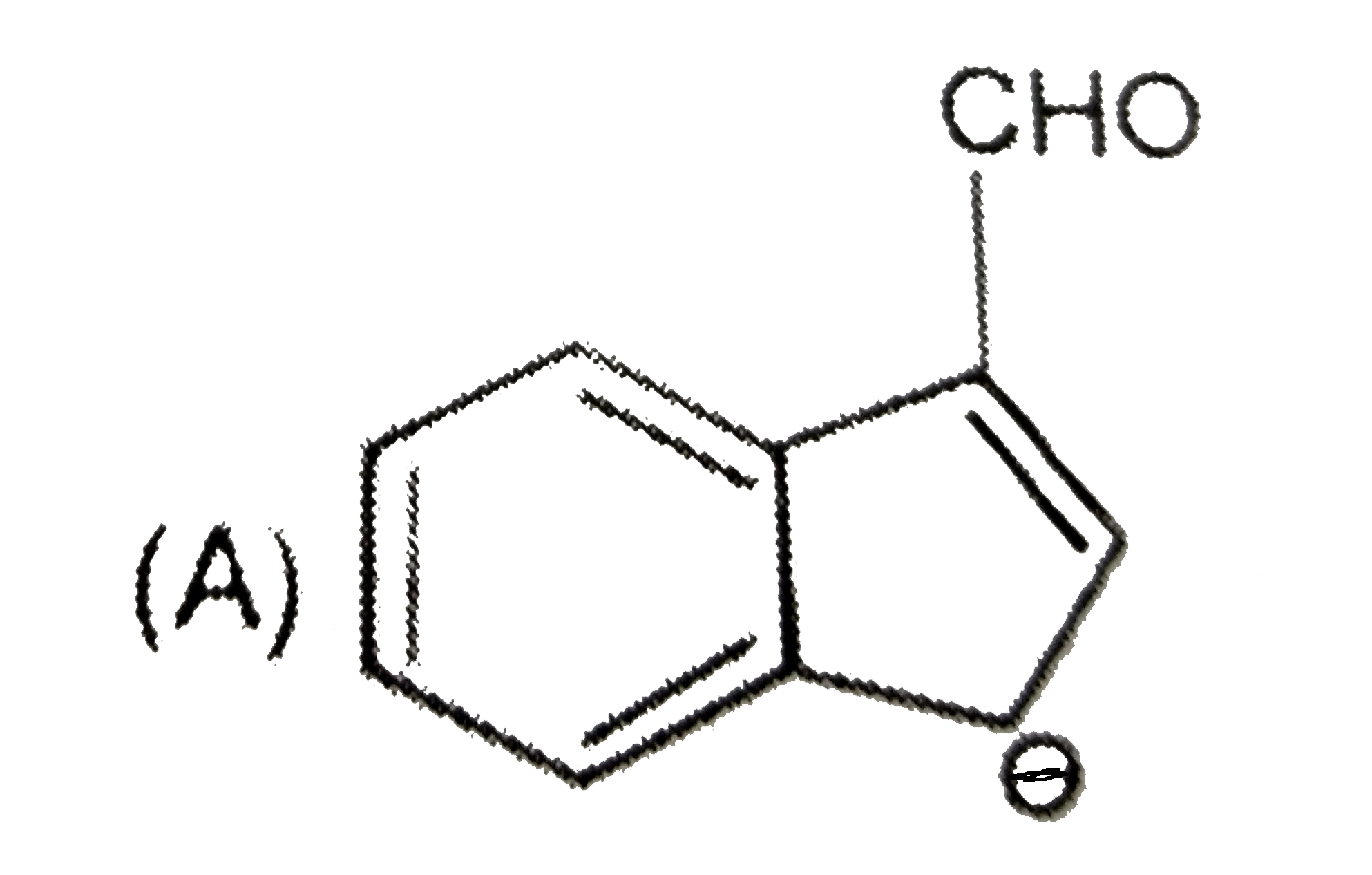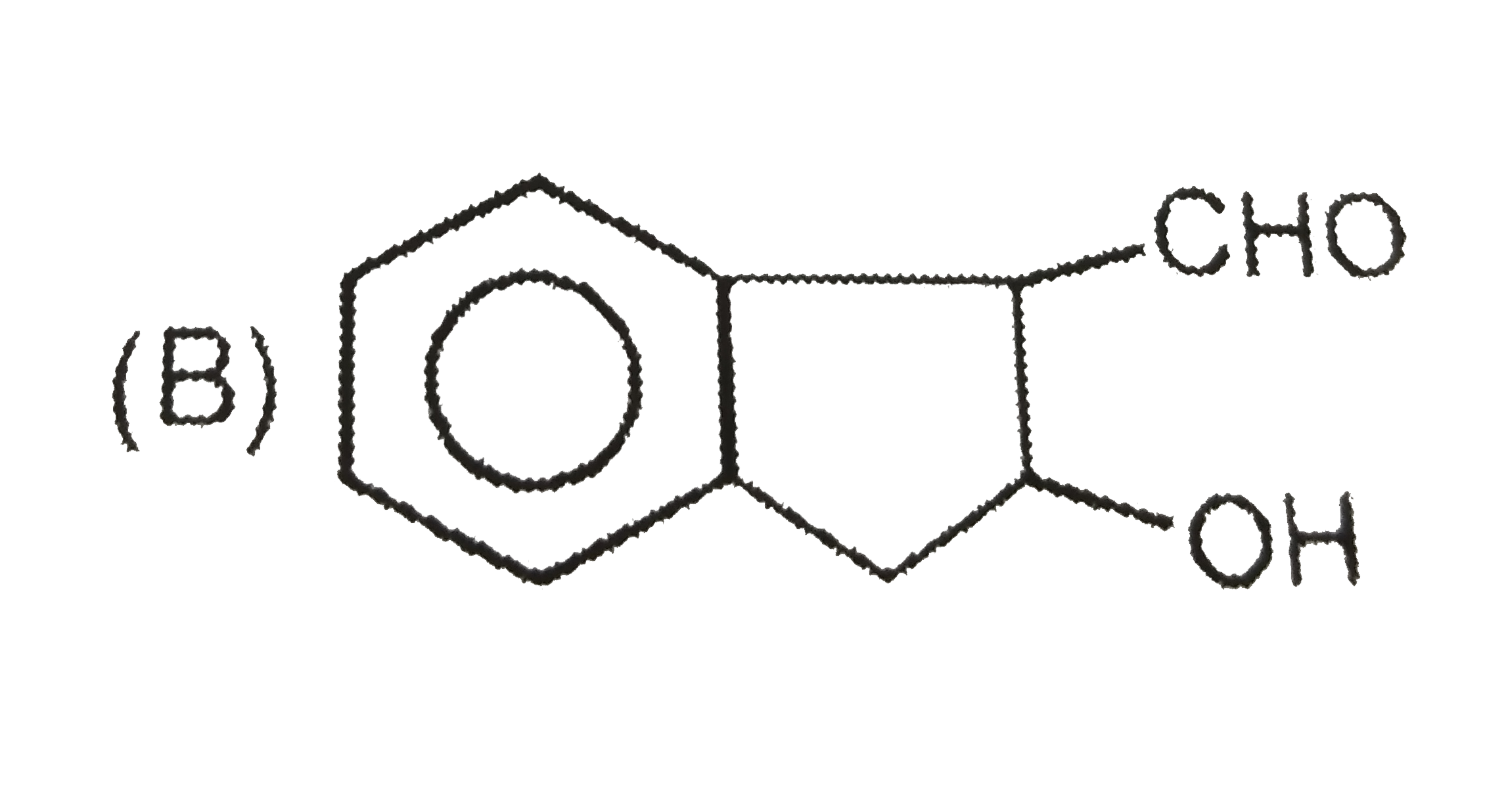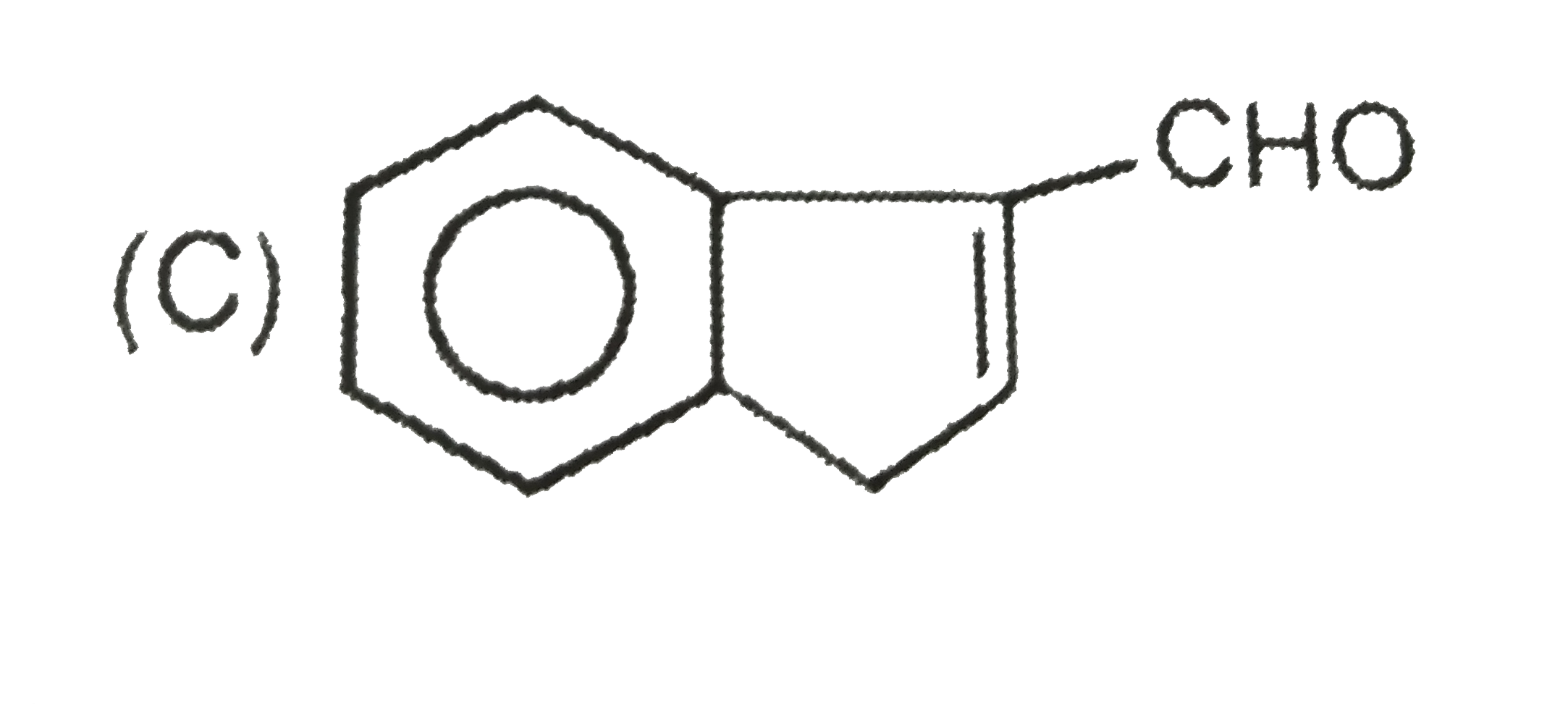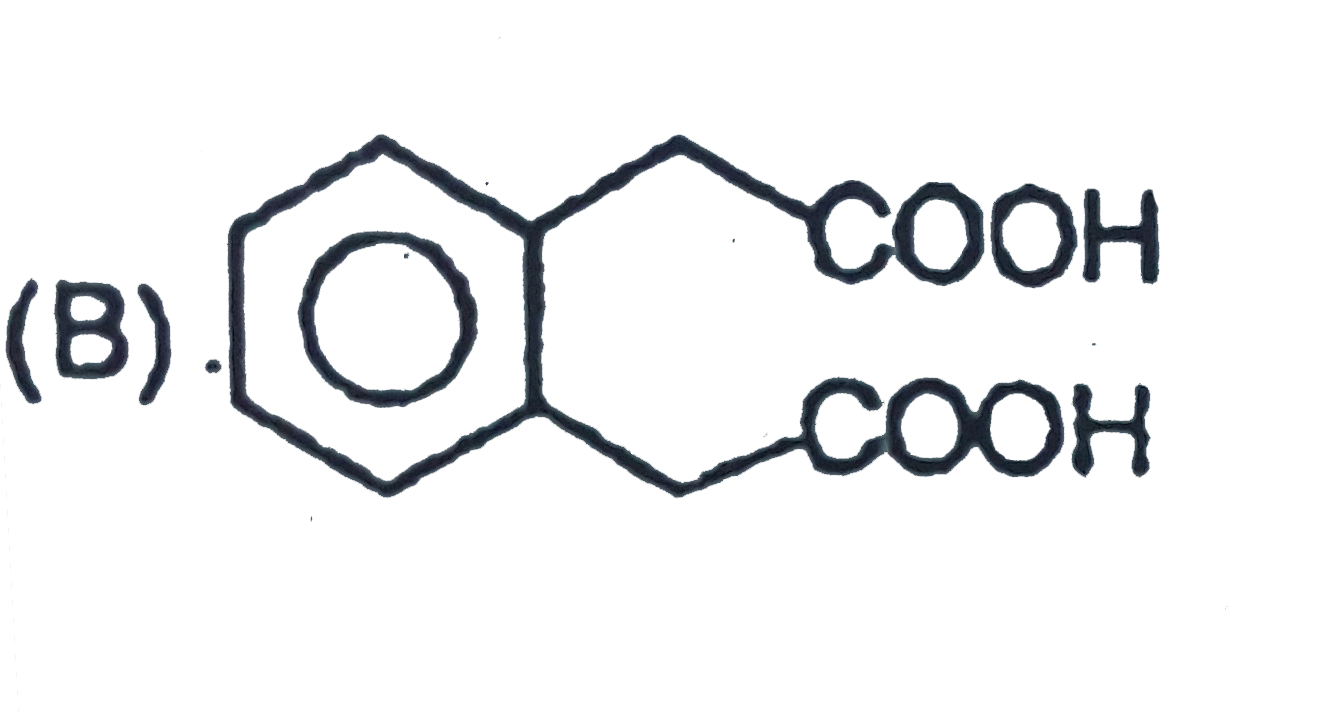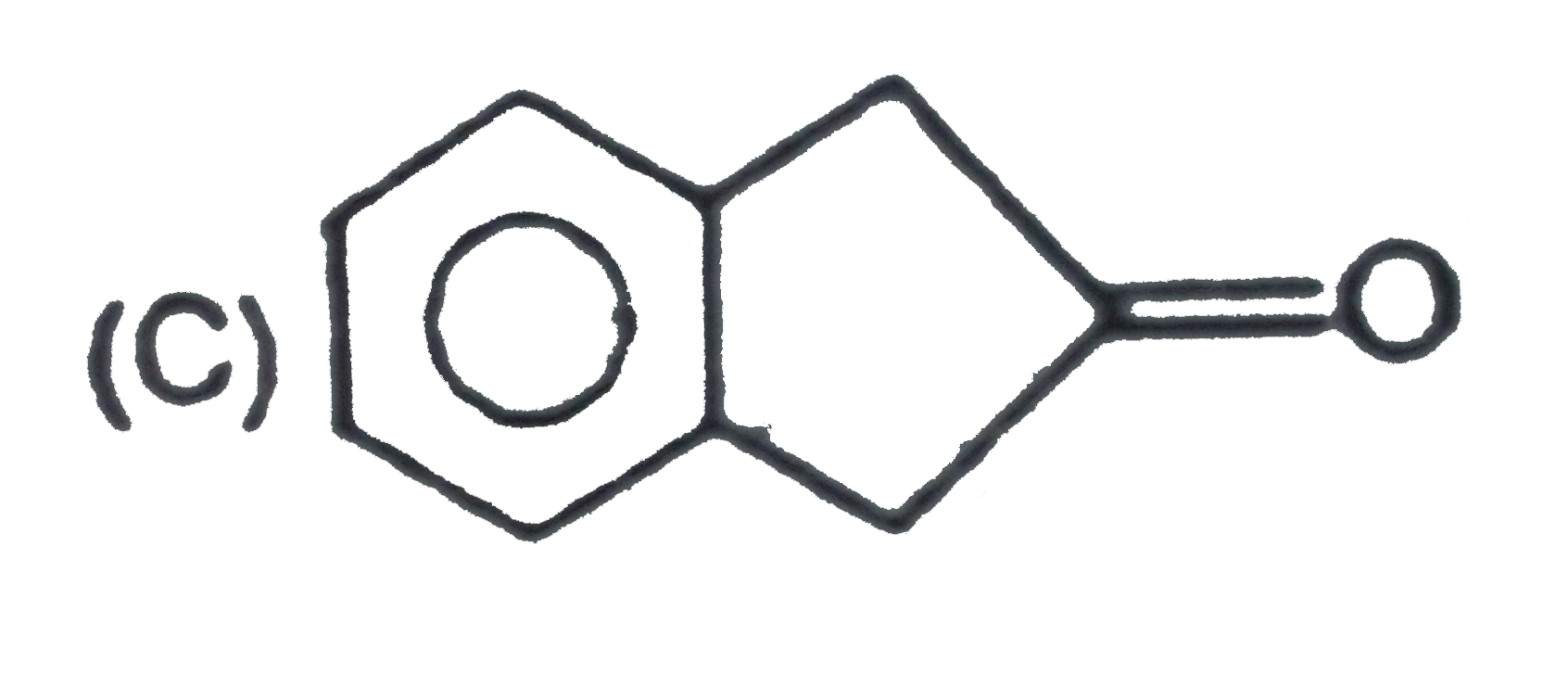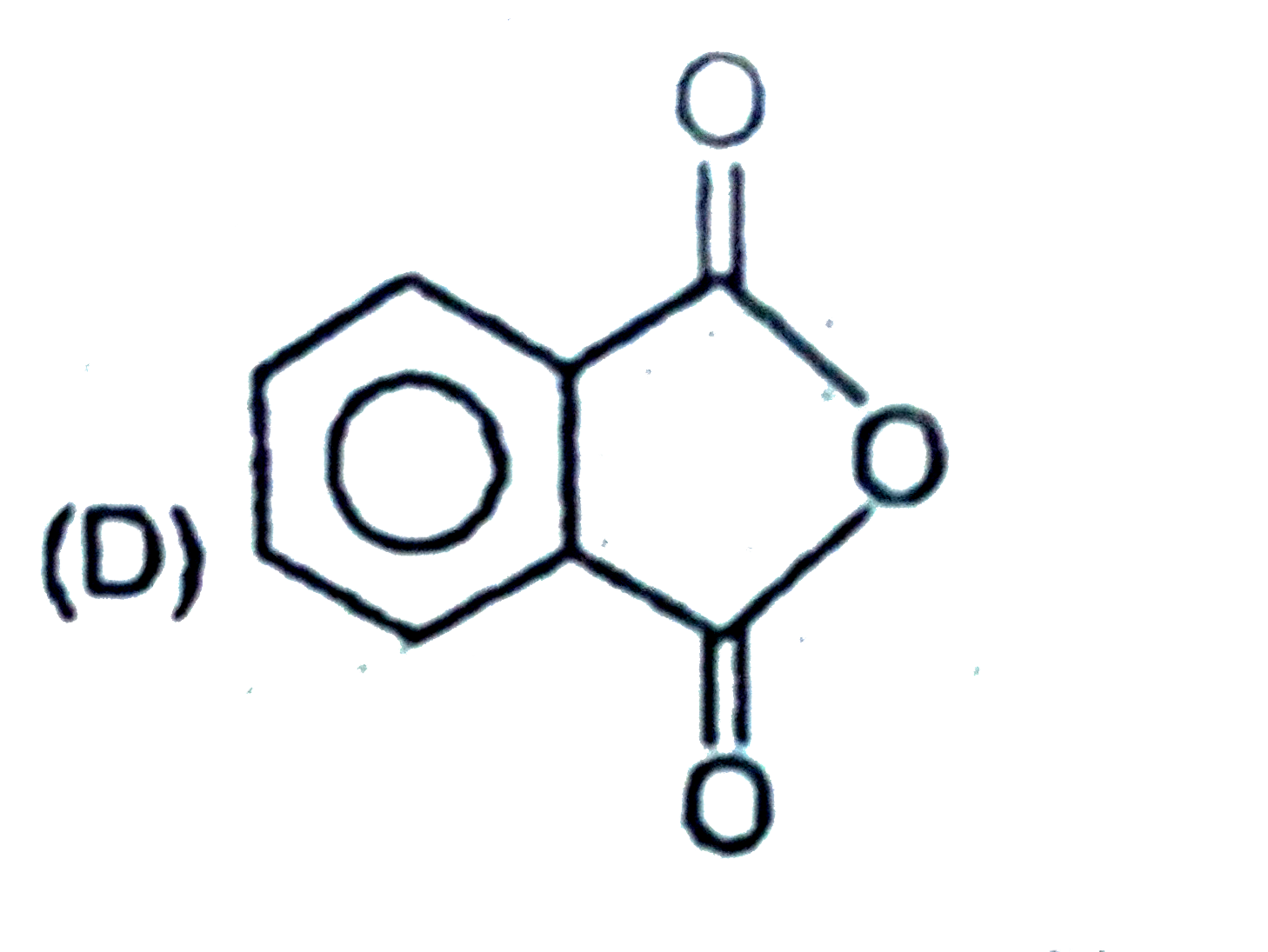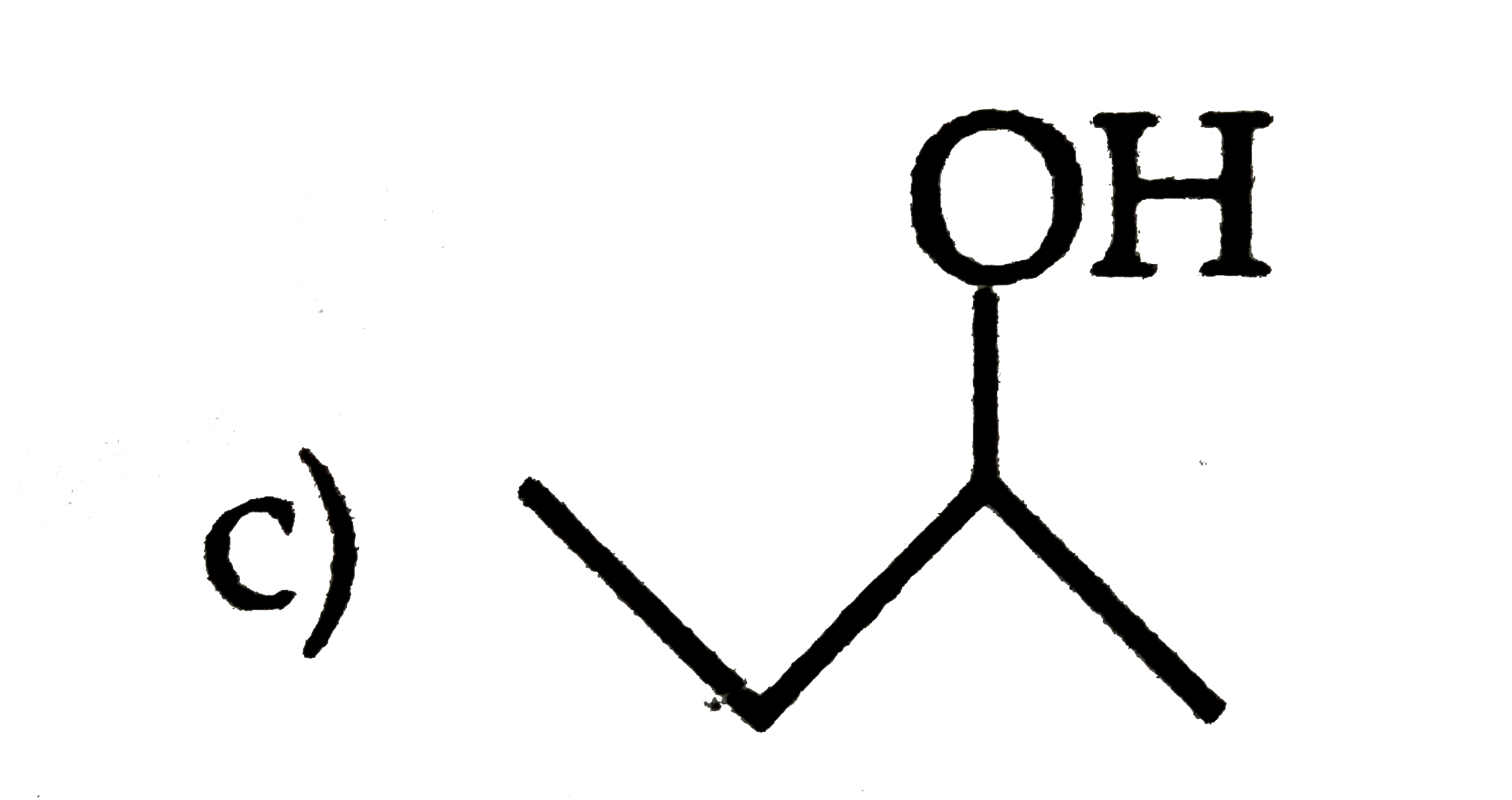Explore topic-wise InterviewSolutions in .
This section includes InterviewSolutions, each offering curated multiple-choice questions to sharpen your knowledge and support exam preparation. Choose a topic below to get started.
| 17401. |
The solubility of AgCl(s) with solubility product 1.6xx10^(-10) in 0.1 (M) NaCl solution would be- |
|
Answer» `1.26xx10^(-5)` (M) Thus `[AG^+]=x mol*(-L)` `[Cl^-]=(x+0.1)mol*L^(-1)` `K_(sp)=[Ag^+][Cl^-]=x(x+0.1)` or, `x(x+0.1)=1.6xx10^(10)` or `x^2+0.1x-1.6xx10^(-10)=0` or `x=1.6xx10^(-9)mol*L^(-1)` |
|
| 17402. |
Which of the following acids possess oxidising, reducing and complex forming properties? |
|
Answer» `HNO_3` |
|
| 17403. |
Which of the following expressions is correct for rate of reaction given below? 5Br_((aq))^(-)+BrO_(3(aq))^(-)+6H_((aq))^(-)to3BR_(2(aq))+3H_(2)O_((i)) |
|
Answer» `(Delta[BR^(0)])/(Deltat)=5(Delta[H^(+)])/(Deltat)` `5Br_((aq))^(-)+BrO_(aq)^(-)+6H_((aq))^(+)to3Br_(2(aq))+3H_(2)O_(l)` aqueous medium is given ,so except `H_(2)O_(l)` for all SPECIES the rate is as FOLLOWS (in which coefficient is `(1)/(x)`) and with respect to reactant -ve and with respect to product the rate is +ve. Rate=`-(1)/(5)(Delta[Br^(-)])/(Delta t)=-(Delta[BrO_(3)^(-)])/(Deltat)` `-(1)/(6)([DeltaH^(+)])/(Deltat)=+(1)/(3)([DeltaBr_(2)])/(Deltat)` `therefore (Delta[Br^(-)])/(Deltat)=(5Delta[BrO_(3)^(-)])/(Deltat)` `(5)/(6)([DeltaH^(+)])/(Deltat)=-(5)/(3)([DeltaBr_(2)])/(Deltat)` `therefore ([DeltaBr^(-)])/(Deltat)=+(5)/(6)(DeltaH^(+))/(Deltat)` So, option (C )is correct. |
|
| 17404. |
Which mechanism is not seen during the hydrolysis of ester? |
|
Answer» `A_(AC_(2))` |
|
| 17405. |
Total number of stereoisomers possible for the given structure excluding the configuration mentioned is : |
|
Answer» |
|
| 17406. |
VIII group of the Mendeleev periodic table contains : |
|
Answer» 6 elements |
|
| 17407. |
Which one of the following is lyophobic colloid? |
|
Answer» PROTEIN SOL |
|
| 17408. |
Which of the following represents the first law of faraday |
|
Answer» `E=mc^(2)` |
|
| 17409. |
What is the meaning of anisotropy ? |
| Answer» SOLUTION :ELECTRICAL RESISTANCE or refractive index of crystalline SUBSTANCES show different values in different directions. This property is called anisotropy. | |
| 17410. |
What is the principal product of the following reactions? |
|
Answer»
|
|
| 17411. |
What is the action ofacetyl chloride on ethyl amine (ethanamine) ? |
Answer» Solution :ACETYL chloride on reaction with ETHYL emine forms monoacetyl derivative, N-ethyl acetamide (or N-acetyl ethylamine). with the EXCESS of acetyl chloride it forms diacetyl derivative. 
|
|
| 17412. |
When our target is asked to make this ether startint from alkyl halides. First we recall that ethers can be prepared by substitution reactions of alkoxide anion nucleophiles with alkyl halide electrophiles- The William ether synthesis. The two ways to prepare the target ether are as follows Next we examine the two reactions to determine whether both are expected to give a good yield of the target compound. Since route A combines a strongly basic nucleophile a secondary (2^(@)) alkayl halide we expect the major product to result from elimaination by E_2 mechanism. Route B on the other hand, employs a primary alkylhalide that can not give elimination (It has no hydrogen on the beta-carbon) and that is excellent. Substrate for an S_N2substitution because it is benzylic Route B is the obvious choice. Alkyl phenyl ether can be prepared by heating |
|
Answer» `C_6H_5Br+CH_2=CH-CH_2ONa` |
|
| 17413. |
Why are alkyl halides insoluble in water? |
| Answer» Solution : For an alkyl halide to dissolve in water, energy is required to OVERCOME the attractions between alkyl halide molecules and BREAK the HYDROGEN bond in water molecules. LESS energy is released when new attractions are set up between alkyl halide and water molecules. These are not as strong as the ORIGINAL hydrogen bonds in water. Therefore alkyl halides are insoluble in water. | |
| 17414. |
What product is obtained when 'W' is heated with KMnO_4//OH^(Theta). |
|
Answer»

|
|
| 17415. |
When our target is asked to make this ether startint from alkyl halides. First we recall that ethers can be prepared by substitution reactions of alkoxide anion nucleophiles with alkyl halide electrophiles- The William ether synthesis. The two ways to prepare the target ether are as follows Next we examine the two reactions to determine whether both are expected to give a good yield of the target compound. Since route A combines a strongly basic nucleophile a secondary (2^(@)) alkayl halide we expect the major product to result from elimaination by E_2 mechanism. Route B on the other hand, employs a primary alkylhalide that can not give elimination (It has no hydrogen on the beta-carbon) and that is excellent. Substrate for an S_N2substitution because it is benzylic Route B is the obvious choice. Ester of toluence -p- sulphonic acid and alkoxide react in the presence of sodium to form ether |
|
Answer» `alpha`-bond since toluene -p-sulphonate is GOOD leaving group |
|
| 17416. |
Which of the following has primary alocholic group? |
|
Answer»
|
|
| 17417. |
When our target is asked to make this ether startint from alkyl halides. First we recall that ethers can be prepared by substitution reactions of alkoxide anion nucleophiles with alkyl halide electrophiles- The William ether synthesis. The two ways to prepare the target ether are as follows Next we examine the two reactions to determine whether both are expected to give a good yield of the target compound. Since route A combines a strongly basic nucleophile a secondary (2^(@)) alkayl halide we expect the major product to result from elimaination by E_2 mechanism. Route B on the other hand, employs a primary alkylhalide that can not give elimination (It has no hydrogen on the beta-carbon) and that is excellent. Substrate for an S_N2substitution because it is benzylic Route B is the obvious choice. Methyl tertiary butyl ether (MTBE) is an important gasoline additive for improving octane number. Select the best method of its synthesis out of the following. |
|
Answer» `CH_3CONa+CH_3Ito` |
|
| 17418. |
Vapour phase refining can be carried out in case of |
|
Answer» Ni |
|
| 17419. |
When our target is asked to make this ether startint from alkyl halides. First we recall that ethers can be prepared by substitution reactions of alkoxide anion nucleophiles with alkyl halide electrophiles- The William ether synthesis. The two ways to prepare the target ether are as follows Next we examine the two reactions to determine whether both are expected to give a good yield of the target compound. Since route A combines a strongly basic nucleophile a secondary (2^(@)) alkayl halide we expect the major product to result from elimaination by E_2 mechanism. Route B on the other hand, employs a primary alkylhalide that can not give elimination (It has no hydrogen on the beta-carbon) and that is excellent. Substrate for an S_N2substitution because it is benzylic Route B is the obvious choice. Which of the following ethers can be prepared by William's synthesis ? |
|
Answer» BENZYL METHYL ETHER |
|
| 17420. |
Which of the following has maximum number of lone pairs associated with Xe ? |
|
Answer» `XeO_(3)` |
|
| 17421. |
When our target is asked to make this ether startint from alkyl halides. First we recall that ethers can be prepared by substitution reactions of alkoxide anion nucleophiles with alkyl halide electrophiles- The William ether synthesis. The two ways to prepare the target ether are as follows Next we examine the two reactions to determine whether both are expected to give a good yield of the target compound. Since route A combines a strongly basic nucleophile a secondary (2^(@)) alkayl halide we expect the major product to result from elimaination by E_2 mechanism. Route B on the other hand, employs a primary alkylhalide that can not give elimination (It has no hydrogen on the beta-carbon) and that is excellent. Substrate for an S_N2substitution because it is benzylic Route B is the obvious choice. Benzyl ether reacts with HI to form |
|
Answer» p-iodotoluene and ETHYL ALCOHOL |
|
| 17423. |
Which is not the isomer of CH_3-CH_2-O-CH_2-CH_3 ?a)CH_3-O-CH_2-CH_2-CH_3b)CH_3-CH_2-CH_2-CH_2-OHc)CH_3-CH_2-CO-CH_3d)CH_3-CH(OH)-CH_2-CH_3 |
|
Answer» |
|
| 17424. |
What is the coordination number of central metal ion in [Fe(C_(2)O_(4))_(3)]^(3-) |
| Answer» Solution :Coordination number is 6 (ONE oxalate is linked by TWO BONDS to the metal). | |
| 17425. |
Write preparation of dichlorine (Cl_2). |
|
Answer» Solution :(A) General Methods : By heating manganese dioxide with concentrated hydrochloric acid. `MnO_2 + 4HCl toMnCl_2 + Cl_2 + 2H_2O` However, a mixture of common salt and concentrated `H_2SO_4` is used in place of HCl `4NaCl + MnO_2 + 4H_2SO_4 toMnCl_2 + 4NaHSO_4 + 2H_2O + Cl_2` By the action of HCl on POTASSIUM permanganate. `2KMnO_4 + 16HCl 2KCl + 2MnCl_2 + 8H2_O + 5Cl_2` (B) Manufacture of DICHLORINE : (i) Deacon.s process: By oxidation of hydrogen chloride gas by atmospheric oxygen in the presence of `CuCl_2` (catalyst) at 723 K. `4HCl + O_2CuCl_2 gt2Cl_2 + 2H_2O` (ii) Electrolytic process : Chlorine is obtained by the electrolysis of brine (concentrated NaCl solution). Chlorine is liberated at anode. It is also obtained as a by product in many chemical industries. Anode : `2Cl_(aq) toCl_2(g) + 2e^(-)` Chlorine was discovered in 1774 by Scheele by action ofHCl on `MnO_2`. In 1810, Davy established its elementary nature and suggested the name chlorine on account of its COLOUR (Greek, Chloros = Greenish Yellow). |
|
| 17426. |
What are nucletic acids'? Define complex lipids. Mention any 'two' functions of lipids. |
|
Answer» Solution : Nucleic acids : These are molecules that allow organisms to transfer genetic information from one generation to the next. Nucleic acids, and DNA in particular,k are key macromolecules for the continuity of life. Nucleic acids are macromolecules made up of units called nucleotides. These are two types of nucleic acid : (A) DNA- Deoxyribonucleic acid (B) RNA - Ribonucleic acid Composition of nucleic acid : 1. A phosphate group 2. Sugar 3. Nitrogenous base In DNA molecules, the sugar moiety is 2- deoxyribose, whereas in RNA molecules it is ribose. In DNA, four bases have been found. They are adenine (A), guanine (G), cytosine (C) and thymine (T). The first three of these bases are found in RNA also but the fourth is uracil (U). Two main functions of nucleic acids are: (i) DNA is responsible for the transmission of inherent CHARACTERS from one generation to the next. This PROCESS of transmission is called heredity. (ii) Nucleic acids (both DNA and RNA) are responsible ror protein synthesis in a cell. Even though the proteins are actually synthesised by thevarious RNA molecules in a cell, the massage for the synthesis of a particular protein is present in DNA. Complex lipids : These are esters of fatty acids with ALCOHOL and possess additional groups also. For example, Phospholipids or Phosphatids are compounds CONTAINING fatty acids and glycerol in addition to a phosphoric acid, nitrogen base and other substituents. They USUALLY possess one hydrophilic head and two non-polar tails. Phospholipids can be phosphoglycerides, phosphoinositides and phosphosphingosides. (a) Functions of lipids : (a) Fats are main food storage compounds and serve as reservoir of energy. (b) Presence of oils or fats is essential for the efficient absorption of fat soluble vitamins A, D, E and K. |
|
| 17427. |
When a liquid boils, there is |
|
Answer» INCREASE of FREE ENERGY |
|
| 17428. |
When our target is asked to make this ether startint from alkyl halides. First we recall that ethers can be prepared by substitution reactions of alkoxide anion nucleophiles with alkyl halide electrophiles- The William ether synthesis. The two ways to prepare the target ether are as follows Next we examine the two reactions to determine whether both are expected to give a good yield of the target compound. Since route A combines a strongly basic nucleophile a secondary (2^(@)) alkayl halide we expect the major product to result from elimaination by E_2 mechanism. Route B on the other hand, employs a primary alkylhalide that can not give elimination (It has no hydrogen on the beta-carbon) and that is excellent. Substrate for an S_N2substitution because it is benzylic Route B is the obvious choice. Which of the following reagents when heated will give a good yield of an ether. |
|
Answer» Isopropyl BROMIDE and sodium ISOPROPOXIDE |
|
| 17429. |
The vapour pressure of a solvent decreased by 10 mm of Hg when a non-volatile solute was added to the solvent. The mole fraction of solute in solution is 0.2, what would be the mole fraction of solvent if the decrease in vapour pressure is 20 mm of Hg? |
|
Answer» 0.8 |
|
| 17430. |
What physical quantities are represented by the following units and what are their most common names ? (i) kgms^(-2)(ii)kgm^(2)s^(-2)(iii)dm^(3) |
| Answer» Solution :(i) FORCE (newton) (ii) WORK (joule) (III) VOLUME (no special NAME). | |
| 17431. |
The spin only magnetic moment of tetrachlorido manganate (II) iron is ................... |
|
Answer» |
|
| 17432. |
Which of the following statements about colloids is false? |
|
Answer» When excess of electrolyte is added to colloidal solution, colloidal particle will be precipitated |
|
| 17433. |
What is cell potential and emf ? Explain with suitable examples. |
|
Answer» Solution :(A) (i) Cell Potential: The potential difference between the two electrodes of a galvanic cell is called the cell potential and is measured in volts. (ii) emf: The cell potential is the difference between the electrode potential (reduction potentials) of the cathode and anode. it is called the cell electromotive force (emf) of the cell when no current is DRAWN through the cell. (B) Formula and expression of cell potential: Cell potential of galvanic cell is positive which can be calculated by FOLLOWING formula: `E_(cell)=E_(right)-E_("left")=E_("red (anode)")-E_("red (cathode)")` The anode are on the left and the cathode on the right while representing the galvanic cell. A galvanic cell is generally represented by putting a vertical line betweenmetal and electrolyte solution and putting a double vertical line between the two electrolytes connected by a SALT brige.  (C) Expression of Daniell cell : Eg. `Zn_((S))| Zn_((AQ))^(2+)||Cu_((aq))^(2+)|Cu_((S))` Oxidation on anode: `Zn_((S))toZn_((aq))^(2+)+2e^(-)` `underline("Reduction on cathode : "Cu_((aq))^(2+)+2e^(-)toCu_((S)))` Total cell reaction : `Zn_((S))toCu_((aq))^(2+)toZn_((aq))^(2+)+Cu_((S))` Where, Zn electrode in anode and copper electrode are cathode. Daniell cell potential: `E_(cell)=E_(right)-E_("left")` `=E_(Cu^(+)|Cu)-E_(Zn^(2+)|Zn)` |
|
| 17434. |
Which of the following compound has tetrahedral geometry? |
|
Answer» `[NI(CN)_(4)]^(2-)` |
|
| 17435. |
Which metal is used for hard soaps ? |
|
Answer» ESTERFICATION |
|
| 17436. |
To remove basic impurities from the ore the substance generally used is |
|
Answer» `SiO_2` |
|
| 17437. |
Which of the following is a thermonuclear reation ? |
|
Answer» `""_(92)^(238)U+""_(0)^(1)NTO""_(93)^(239)Np+""_(-1)^(0)e` |
|
| 17438. |
Which of the following statement is not correct for the catalyst? |
|
Answer» It catalyses the forward and BACKWARD reaction to the same extent. Statement (A), (C ),(D) are the CHARACTERISTIC of catalyst. |
|
| 17439. |
Which one of the following is the stablest structure of cyclohexatriene? |
|
Answer» CHAIN form |
|
| 17440. |
What is electrolyte cell ? Give its uses. |
|
Answer» Solution :* In an electrolytic cell external source of voltage is used to bring about a chemical reaction. In electrolytic cell external electrical energy get converted into chemical energy. * Uses : Electrochemical process is USEFUL in laboratory as WELL as in chemical industries. Some uses are given as follows: (i) For purification of metals : e.g., impure copper gets converted into copper with high purity. this is the basis of it and for this, impure copper copper gets converted into copper with high purity. this is the basis of it and for this, impure copper metal is used as anode which on passing of DC current, it get dissolved and `Cu^(2+)` of solution get reduced and deposited on CATHODE. (ii) For production of metals in large quantity: e.g., metals like Na, Mg and Al can be obtained by reduction of such large metal ions. it is very useful then sodium and magnesium metals can be obtained by electrolysis of their MOLTEN CHLORIDES. Al can be produced by electrolysis of alumnium oxides in presence of aluminium cryolite. |
|
| 17441. |
Which of the following compounds undergo aldol condensation? |
|
Answer» `CH_(3)CHO` |
|
| 17442. |
Which one of the following is not a surfactant ? |
|
Answer» `CH_(3) - (CH_(2))_(15) - N^(+)(CH_(3))_(3)Br^(-)` |
|
| 17444. |
The sucrose that we eat in daily life is converted into glucose and fructose. Name the enzyme which facilitates this chemical reaction. |
|
Answer» SOLUTION :INVERTASE or sucrase : `UNDERSET("Sucrose")C_12H_22O_11 +H_2Ooverset("Invertase")underset(" or Sucrase")to underset("Glucose")(C_6H_12O_6)+underset("FRUCTOSE")C_6H_12O_6` |
|
| 17445. |
Which orbital is spherically symmetrical ? |
|
Answer» 5f |
|
| 17446. |
Under what conditions glucoses is converted to gluconic and saccharic acid ? |
| Answer» Solution :On oxidation with mild oxidising agents such as `Br_(2)//H_(2)O` , glucose is converted into GLUCONIC acid and on oxidation with STRONG oxidising agents such as conc. `HNO_(3)`,glucose is oxidised to saccharic acid . | |
| 17447. |
Which of the following set of species are coloured as well as diamagnetic ? (P) [Cl_(2)" and "Br_(2)] (Q)[AgBr" and "AgI] (R ) [Na_(2)[Fe(CN)_(5)NO]" and "[Fe(H_(2)O)_(5)NO]SO_(4)] (S) [Na_(2)[Fe(CN)_(5)NO]" and "Na_(4)[Fe(CN)_(5)NOS]] |
|
Answer» <P>P, Q, S |
|
| 17448. |
Which of the following is incorrect about S_(8) molecule |
|
Answer» No. of LONE PAIRS : 16 |
|
| 17449. |
Which of the following is a buffer |
|
Answer» `NAOH + CH_(3)COONa` |
|
| 17450. |
Which one of the following does not exist ? (i) XeOF_(4), (ii) NeF_(2) , (iii) XeF_(2), (iv) XeF_(6) |
| Answer» Solution :`NeF_2` does not EXIST because Ne has very high VALUES of ionisation ENTHALPY. | |
